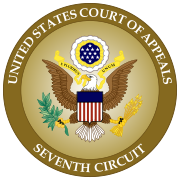
Pac-Man, originally called Puck Man in Japan, is a 1980 maze action video game developed and released by Namco for arcades. In North America, the game was released by Midway Manufacturing as part of its licensing agreement with Namco America. The player controls Pac-Man, who must eat all the dots inside an enclosed maze while avoiding four colored ghosts. Eating large flashing dots called "Power Pellets" causes the ghosts to temporarily turn blue, allowing Pac-Man to eat them for bonus points.

Ms. Pac-Man is a 1982 maze arcade video game developed by General Computer Corporation and published by Midway. It is the first sequel to Pac-Man (1980) and the first entry in the series to not be made by Namco. Controlling the title character, Pac-Man's wife, the player is tasked with eating all of the pellets in an enclosed maze while avoiding four colored ghosts. Eating the larger "power pellets" lets the player eat the ghosts, who turn blue and flee.

Jr. Pac-Man is an arcade video game developed by General Computer Corporation and released by Bally Midway on August 13, 1983. It has the same gameplay as prior entries in the series, but the maze in Jr. Pac-Man scrolls horizontally and has no escape tunnels. The bonus item which moves around the maze changes dots into a form which slows Jr. Pac-Man as they are being eaten.

K.C. Munchkin!, released in Europe as Munchkin, is a maze game for the Magnavox Odyssey 2. Its North American title is an inside reference to then president of Philips Consumer Electronics, Kenneth C. Menkin.

Super Pac-Man is a 1982 maze chase arcade game developed and published by Namco. It was distributed in North America by Midway Games. Super Pac-Man is Namco's take on a sequel to the original Pac-Man; Midway had previously released Ms. Pac-Man, which Namco had little involvement with. Toru Iwatani returns as designer.

A video game clone is either a video game or a video game console very similar to, or heavily inspired by, a previous popular game or console. Clones are typically made to take financial advantage of the popularity of the cloned game or system, but clones may also result from earnest attempts to create homages or expand on game mechanics from the original game. An additional motivation unique to the medium of games as software with limited compatibility, is the desire to port a simulacrum of a game to platforms that the original is unavailable for or unsatisfactorily implemented on.

Stern Electronics Inc. v. Kaufman, 669 F.2d 852, is a legal case in which the United States Court of Appeals Second Circuit held that Omni Video Games violated the copyright and trademark of Scramble, an arcade game marketed by Stern Electronics. The lawsuit was due to a trend of "knock-off" video games in the early 1980s, leading to one of the earliest findings of copyright infringement for a video game, and the first federal appellate court to recognize a video game as a copyrighted audiovisual work.

Pac-Man is a 1982 maze video game developed and published by Atari, Inc. under official license by Namco, and an adaptation of the 1980 hit arcade game of the same name. The player controls the title character, who attempts to consume all of the wafers while avoiding four ghosts that pursue him. Eating flashing wafers at the corners of the screen will cause the ghosts to turn temporarily blue and flee, allowing Pac-Man to eat them for bonus points.

Midway Manufacturing Co. v. Artic International, Inc., 704 F.2d 1009, was a legal case where the United States Court of Appeals for the Seventh Circuit found that Artic violated Midway's copyright in their arcade games Pac-Man and Galaxian. The lawsuit was part of a trend of "knock-off" video games in the early 1980s, with courts recognizing that a video game can qualify for protection as a copyrighted audiovisual work.

Lewis Galoob Toys, Inc. v. Nintendo of America, Inc. is a 1992 legal case where the United States Court of Appeals for the Ninth Circuit concluded that there was no copyright infringement made by the Game Genie, a video game accessory that could alter the output of games for the Nintendo Entertainment System. The court determined that Galoob's Game Genie did not violate Nintendo's exclusive right to make derivative works of their games, because the Game Genie did not create a new permanent work. The court also found that the alterations produced by the Game Genie qualified as non-commercial fair use, and none of the alterations were supplanting demand for Nintendo's games.

Sega Enterprises Ltd. v. Accolade, Inc., 977 F.2d 1510, is a case in which the United States Court of Appeals for the Ninth Circuit applied American intellectual property law to the reverse engineering of computer software. Stemming from the publishing of several Sega Genesis games by video game publisher Accolade, which had disassembled Genesis software in order to publish games without being licensed by Sega, the case involved several overlapping issues, including the scope of copyright, permissible uses for trademarks, and the scope of the fair use doctrine for computer code.

Data East USA, Inc. v. Epyx, Inc. 862 F.2d 204, 9 U.S.P.Q.2d (BNA) 1322 was a court case between two video game manufacturers, where Data East claimed that their copyright in Karate Champ was infringed by World Karate Championship, a game created by Epyx. Data East released Karate Champ in arcades in 1984, and the game became a best-seller and pioneered the fighting game genre. The next year, Epyx published World Karate Championship for home computers, which sold 1.5 million copies. Data East sued Epyx, alleging that the game infringed on their copyright and trademark.

Atari Games Corp. v. Nintendo of America Inc., 975 F.2d 832, is a U.S. legal case in which Atari Games engaged in copyright infringement by copying Nintendo's lock-out system, the 10NES. The 10NES was designed to prevent Nintendo's video game console, the Nintendo Entertainment System (NES), from playing unauthorized game cartridges. Atari, after unsuccessful attempts to reverse engineer the lock-out system, obtained an unauthorized copy of the source code from the United States Copyright Office and used it to create its 10NES replica, the Rabbit. Atari then sued Nintendo for unfair competition and copyright misuse, and Nintendo responded that Atari had engaged in unfair competition, copyright infringement, and patent infringement.

Atari Games Corp. v. Oman was a series of court cases where Atari, a video game developer, challenged the United States Copyright Office for refusing copyright registration for their arcade game Breakout. The Register of Copyrights first rejected Atari's registration in 1987, determining that Breakout lacked sufficient creativity to qualify as an audiovisual work. Atari twice appealed the register's decision before their copyright was granted. Decided in 1992, the case affirmed that video games are protected from clone developers who mimic a game's audiovisual aspects.
The protection of intellectual property (IP) of video games through copyright, patents, and trademarks, shares similar issues with the copyrightability of software as a relatively new area of IP law. The video game industry itself is built on the nature of reusing game concepts from prior games to create new gameplay styles but bounded by illegally direct cloning of existing games, and has made defining intellectual property protections difficult since it is not a fixed medium.

Tetris Holding, LLC v. Xio Interactive, Inc., 863 F.Supp.2d 394, was a 2012 American legal case related to copyright of video games, confirming that a game's look and feel can be protected under copyright law. Tetris Holding is a company that holds the copyright to the original Tetris game from 1984 and licenses those rights to game developers. Xio Interactive is a game developer that released Mino in 2009, a mobile game based on the gameplay of Tetris. Mino was downloaded millions of times, and Tetris Holding filed a DMCA notice and eventually a lawsuit against Xio for copyright infringement.

Capcom U.S.A. Inc. v. Data East Corp., 1994 WL 1751482 was a 1994 legal case related to the copyright of video games, where Capcom alleged that Data East's game Fighter's History infringed the copyright of Capcom's game Street Fighter II. It was revealed that the design documents for Fighter's History contained several references to Street Fighter II, leading Capcom to sue Data East for damages, as well as a preliminary injunction to stop the distribution of the infringing game. In spite of the intentional similarities between the two games, the court concluded that Data East did not infringe upon Capcom's copyright, as most of these similarities were not protected under copyright. Judge William H. Orrick Jr. applied a legal principle known as the merger doctrine, where courts will not grant copyright protection where it would effectively give someone a monopoly over an idea.

Atari Inc. v. Amusement World Inc., 547 F.Supp. 222 is a legal case in which the United States District Court for the District of Maryland held that Amusement World's arcade game Meteors did not violate Atari's copyright in their game Asteroids.

















